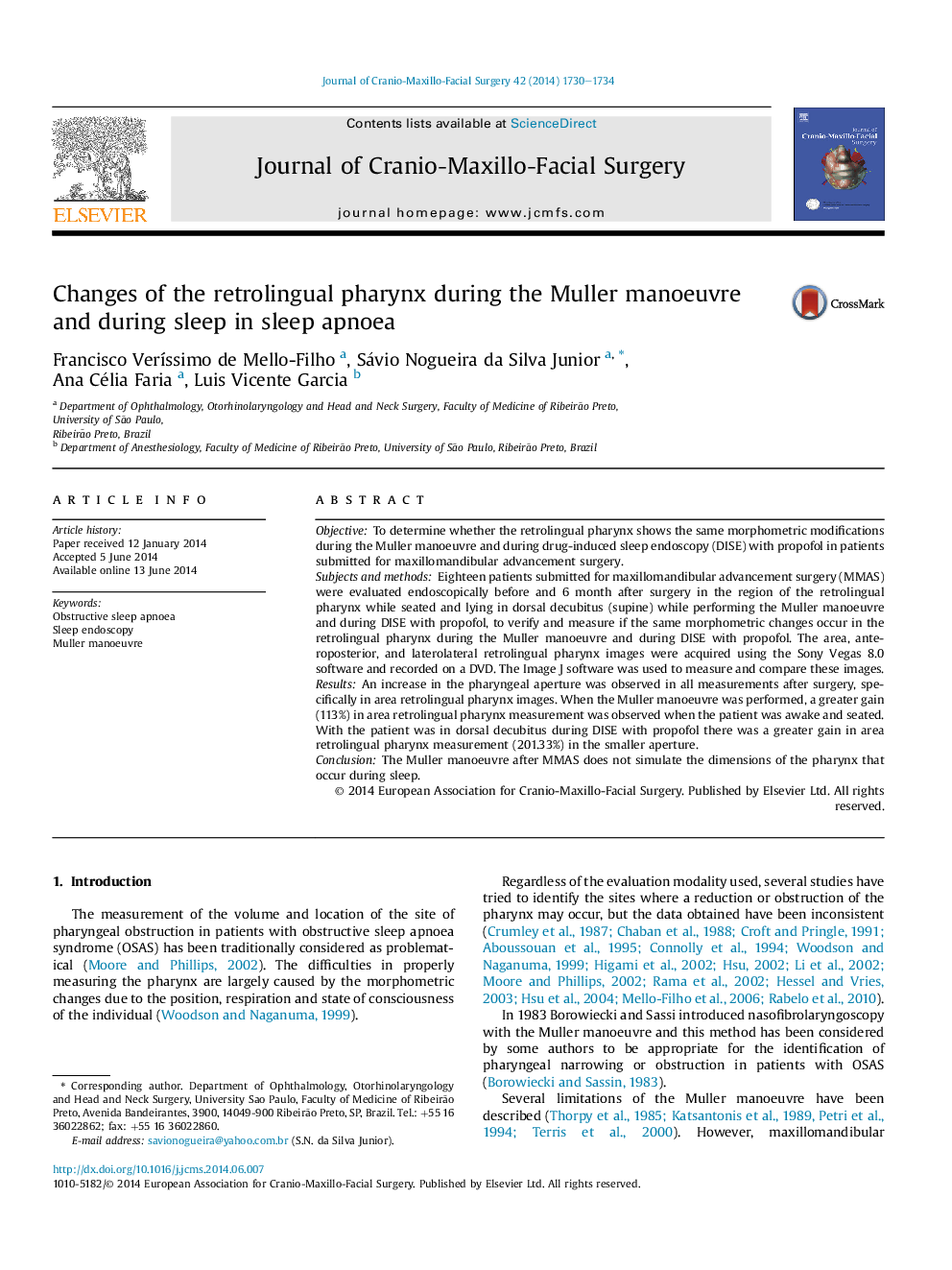| Article ID | Journal | Published Year | Pages | File Type |
|---|---|---|---|---|
| 3142736 | Journal of Cranio-Maxillofacial Surgery | 2014 | 5 Pages |
ObjectiveTo determine whether the retrolingual pharynx shows the same morphometric modifications during the Muller manoeuvre and during drug-induced sleep endoscopy (DISE) with propofol in patients submitted for maxillomandibular advancement surgery.Subjects and methodsEighteen patients submitted for maxillomandibular advancement surgery (MMAS) were evaluated endoscopically before and 6 month after surgery in the region of the retrolingual pharynx while seated and lying in dorsal decubitus (supine) while performing the Muller manoeuvre and during DISE with propofol, to verify and measure if the same morphometric changes occur in the retrolingual pharynx during the Muller manoeuvre and during DISE with propofol. The area, anteroposterior, and laterolateral retrolingual pharynx images were acquired using the Sony Vegas 8.0 software and recorded on a DVD. The Image J software was used to measure and compare these images.ResultsAn increase in the pharyngeal aperture was observed in all measurements after surgery, specifically in area retrolingual pharynx images. When the Muller manoeuvre was performed, a greater gain (113%) in area retrolingual pharynx measurement was observed when the patient was awake and seated. With the patient was in dorsal decubitus during DISE with propofol there was a greater gain in area retrolingual pharynx measurement (201.33%) in the smaller aperture.ConclusionThe Muller manoeuvre after MMAS does not simulate the dimensions of the pharynx that occur during sleep.
